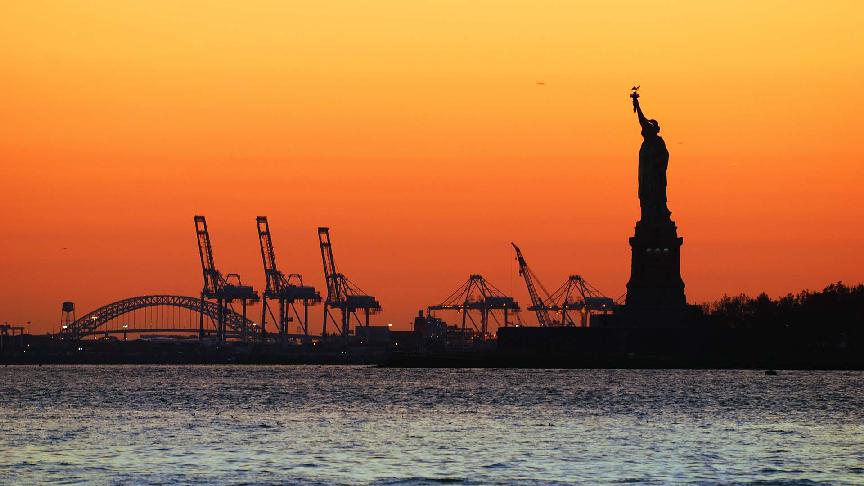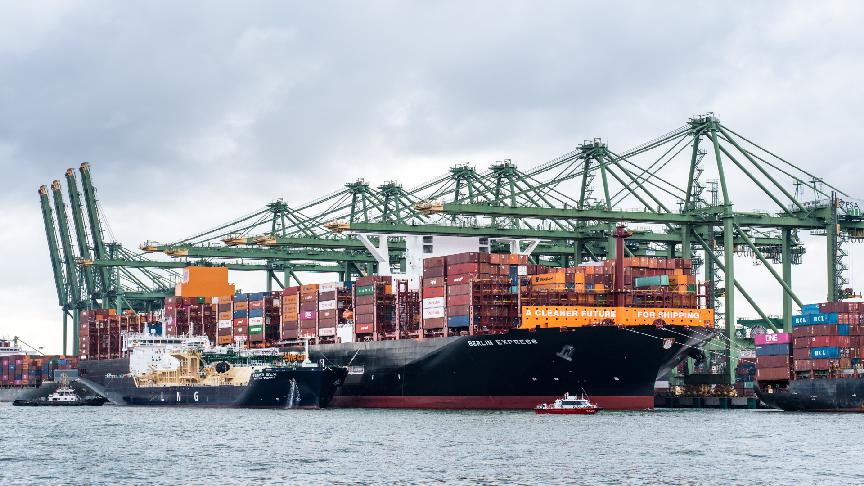21 May 2024 (Lloyd's List) - THE RED Sea crisis has had little practical impact on volumes, but it has highlighted the growing importance of minor trades to the health of the global market.
Recent first-quarter figures from Container Trades Statistics suggest the container market is bouncing back in terms of demand, but at the regional level the picture is more nuanced.
“The one big impact is that carriers are not stretching for eastern Mediterranean cargo anymore, and are going for northern Europe and the western Mediterranean where they can turn the boxes quicker,” CTS managing director Nigel Pusey told Lloyd’s List in an interview.
“Operationally it makes more sense. For the carriers, it is much more interesting to take cargo to northern Europe as they avoid the Red Sea, than it is to go to the eastern Mediterranean. Those transits take 10 extra days to Rotterdam and Felixstowe, but closer to 14 days if you are going to Piraeus.”
That change has seen the eastern Mediterranean region go from 34% volume growth in 2023 to growing just 5% year on year in 1Q24.
“When you look at northern Europe from China, in the first quarter of this year it is up 12%, whereas for the whole of 2023 it barely made 4% in the full year, Pusey said. “If you compare 1Q24 to 1Q22 you would see a small decrease.”
The growth in northern Europe did not necessarily fit with what is going on with the economics of the region, he added.
“It just shows that it is much more attractive for the lines to have northern European cargo.”
Outside of this, however, the Red Sea closure is making little other difference.
“The only thing we have seen is pressure on pricing from China to the US west coast, Pusey said. “That was probably as much a shortage of containers in China after the initial phase when equipment was taking 25% longer to get back.”
But away from the main lane trades to Europe and North America, there were signs of strength on lower-volume trades.
“If we look at the areas that are still strong in the first quarter of 2024 over 2023, it is ones like China to Mexico, and also China to the Middle East, the east and west coasts of Africa and to the east coast of South America,” Pusey said.
This followed a trend that had developed during 2023.
Lower China exports
“If we just focus on China, exports were only 4% up,” he said. “But if you take all those sub-regions, every one had a 20%-25% increase. That compares [with] Europe where volume was flat, the US west coast was down 8%, the US Gulf was down 16%.”
Lower China exports were a reflection of lower US and European demand in 2023, but this was offset by growth generated in the smaller regions.
“This was not so much a matter of carrier pricing policies, but of China finding new markets for its goods as the former key purchasing regions reduced demand,” Pusey said.
“That has been going on pretty much since the end of 1Q23 and is continuing into 2024. There is a massive shift going on there almost underneath the Red Sea crisis.
“This growth in the minor trades is effectively what is keeping global trade at a level which it would not have been at if you had just relied on traditional transpacific and Asia-Europe trades.”
China’s exports would have been a lot lower had it relied on the traditional European and American outlets, he added.
“They’ve rushed to find the likes of Brazil and India and gone in there in big ways,” he said. “The volumes are nothing like what they can achieve from America or Europe but are steadily increasing.”
Fast-growing Mexico
But he points to the fast-growing Mexico market as an example of how this is not all plain sailing for carriers.
“Cargo to Mexico, which rose 35% in 2023: In overall numbers it is not going to bother the scorekeepers very much — in 2022 China did 900,000 boxes to Mexico and in 2023 they did 1.1m,” Pusey said.
“That’s still quite small beer, and with all these small trades, people are having to work a little bit harder because while these smaller places can make up the volumes, there is an awful lot more effort going in to it. You can’t put 24,000 teu vessels into too many places in South America or Africa.”
The important thing, however, was that these other regions were growing, and growing consistently.
“They are going to make a difference in 10 years’ time,” Pusey said. “But at the moment they are not at the critical mass that makes it easy for the shipping lines to turn away from Europe and America easily.”
Nevertheless, the main lane trades are set to perform better this year than last.
“Those increases are still happening on the minor trades, and my view is that Europe and America will go back to where they were in 2022, so I suspect it will be a better year,” Pusey said.
“The consensus view appears to be a 3% growth this year and that is probably not that far off the mark once Europe and America get back up to speed.”







